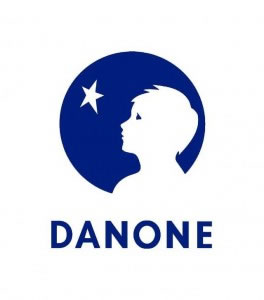Critical Year For Danone

Danone has reported a 4.7% increase in like-for-like net sales to €21.14 billion for 2014, despite a 1.5% fall in sales volume. On a reported basis sales slipped 0.7% and the 2014 trading operating margin at 12.59% was down 12bps like-for-like from 2013.
The negative impact of fluctuations in exchange rates was 5.5%, reflecting a marked decline in certain emerging currencies, including the Russian ruble, the Argentine peso and the Indonesian rupiah. As expected, the consequences of the false alert on quality triggered by Fonterra in August 2013 and the decline in sales of Dumex brand products in China in particular continued to undermine the company’s growth and profitability in 2014.
Key developments during the year included a very steep rise in the cost of milk and dairy ingredients. This surge was offset by solid growth trends, by selective and competitive price increases, by optimization of the mix, and by additional efforts to reduce costs. A focus on optimizing raw material, production and logistics costs led to continued high productivity. In addition, most of the cost reduction plan for Europe was finalized by the end of 2014 and delivered the savings anticipated.
Franck Riboud, Chairman of Danone, comments: “2014 was a critical year for Danone, with a number of major transformations aimed at preparing our company for the future. In particular, we outlined the key points of Danone 2020, our roadmap to a new stage in development. We also adopted a new structure that will help us roll out this initiative over time, while meeting immediate challenges. This was why we decided to create a role of Chairman with strengthened duties, focusing on medium- and long-term strategy, while entrusting a CEO and management team with responsibility for guiding day-to-day operations.”
“Our 2014 achievements laid a solid foundation for Danone to build on in 2015 and the years ahead,” says Emmanuel Faber, CEO of Danone. “In the course of the year, we also made significant progress in many markets, especially in Europe where a combined focus on updating our product lines and raising our competitive edge are beginning to pay off. We also continued to build our portfolio and expand in high-growth markets, particularly in Asia and Africa.”
Danone expects that economic conditions will remain difficult and unstable overall in 2015, with fragile or even deflationary consumer trends in Europe, emerging markets undermined by volatile currencies, and difficulties specific to a few major markets, in particular the CIS.
 In 2015, Danone also anticipates marked but varied trends in the cost of major strategic raw materials, particularly milk.
In 2015, Danone also anticipates marked but varied trends in the cost of major strategic raw materials, particularly milk.
Against this backdrop, Danone will focus on developing its product categories and winning market share. In Europe, the company will continue to strengthen its competitive edge. In growth markets, it will focus on developing its product categories, in particular through strong local brands in the most attractive geographical markets.
After delivering profitable growth in the second half of 2014, Danone will seek to maintain this position, generating organic growth in sales and in operating margin in 2015, while making the investments necessary to ensure this performance is lasting.
Danone’s 2015 targets include organic growth in sales of between 4% and 5% and a slight growth in trading operating margin. The group will also continue to work towards lasting gains in free cash-flow without setting a short-term target.


































